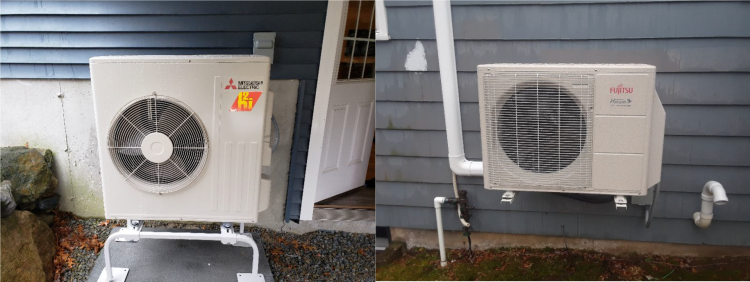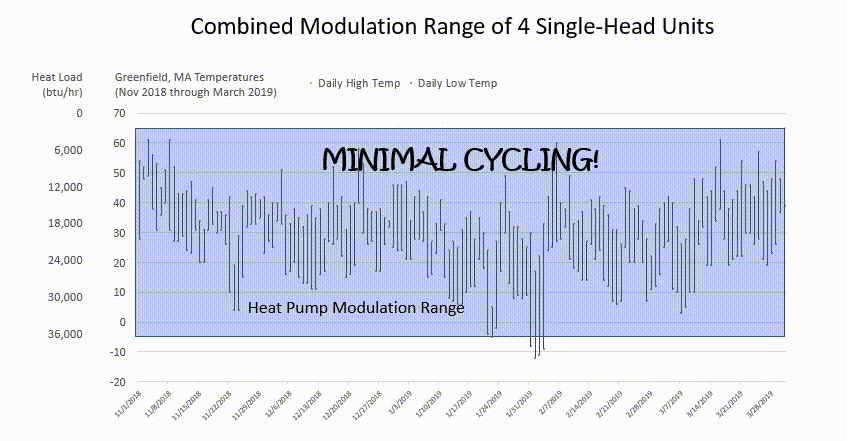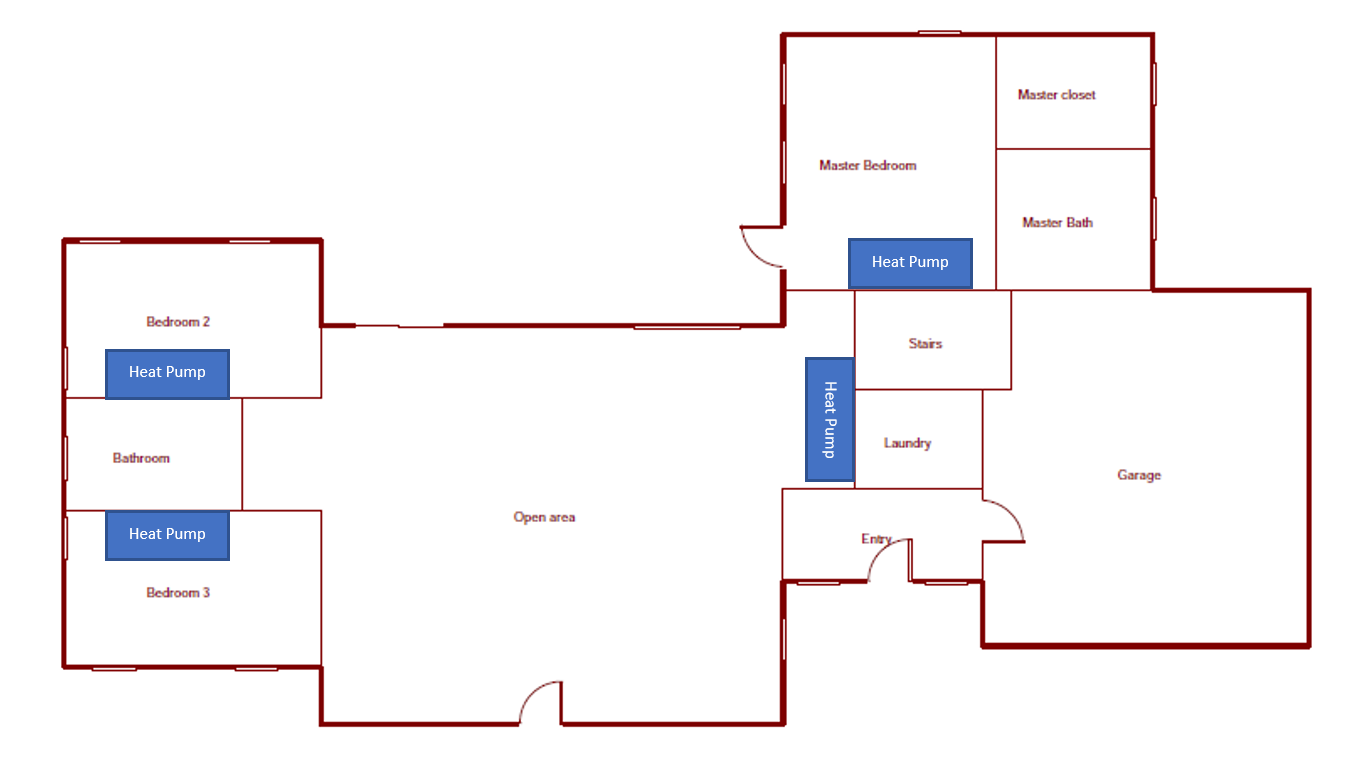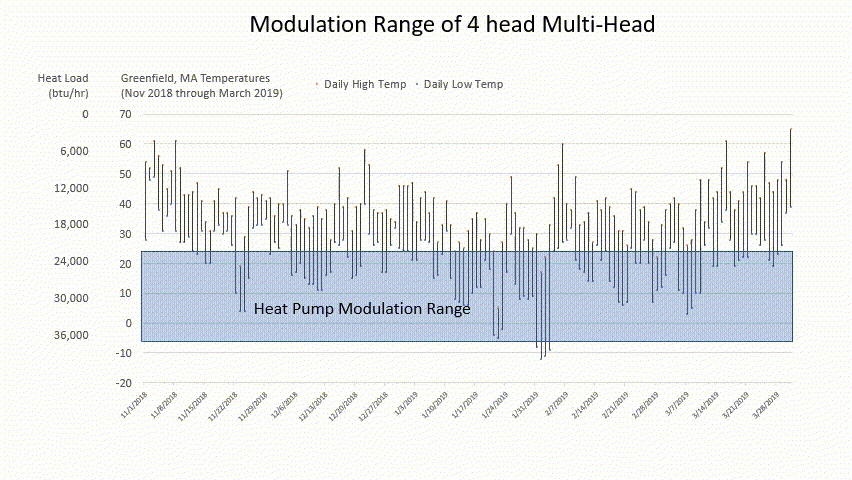

MassCEC’s whole-home air-source heat pump pilot program has been running for about five months now. See our launch posting and our one month, two month, three month, and four month updates for more information. To make this pilot as valuable as possible, we’re trying to share information along the way and are open to feedback so that we can adjust course if needed.
The whole-home pilot has 27 applications so far (16 existing building retrofits and 11 new construction or gut rehab projects) and 7 projects installed. The pilot now has participating installers from 33 companies, although we’ve only had applications from 14 companies so far. We’re hoping that as more installers become familiar with our pilot, they will continue to submit more projects to the pilot until we have awarded the entire budget or until June 30, 2020. You can check out how much funding we have available here.
One exciting story from the pilot: We were planning to reject a four-unit new construction project in Somerville because it included gas appliances; for new construction, our pilot requires that the homes have no fossil fuel appliances. However, when we told the heat pump installer, Ryan Farnham of Mass Mini-Splits, that the project was ineligible he talked to the developer who decided to go with all electric appliances, including a heat pump water heater. Farnham said, “[For this project], the customer became interested in doing all electric buildings after success in previous projects and seeing the savings in efficiency. The flexibility in design and types of units that can be used along with the advanced technology is the driving force on having the units installed in place of traditional natural gas HVAC applications.” I’m excited to see developers getting comfortable with all electric new construction!
Benefits of Single-Heads for Milder Days
We had another new construction application this month that illustrates the advantages of using single-head heat pumps. For this single-story home in Amherst (see floor plan below), the installer Scott Cernack of M.J. Moran, Inc. selected a single-head for each of the bedrooms and one for the rest of the living space. Scott considered installing a mini-ducted unit for the two smaller bedrooms, but there was not a great place to put the ducted unit, since the home is built on slab and the attic is outside of the conditioned envelope.

Installing four single-head units offers more variability to match the home’s heat load throughout the heating season . If you just add together the capacities of the individual units, they seem potentially a bit oversized for the home. The home’s peak heat load is 35,508 btu/hr at the design temperature of -2°F, while together the four units can generate about 42,000 btu/hr of heat at -2°F. However, for milder days, each of the single-head units in the bedrooms can turn down to 1,600 btu/hr at 47°F, so opting for single-head units means that even on a mild day the heat pumps can modulate down to meet the load. If the installer had selected a 4-head multi-head from the same manufacturer, the multi-head outdoor unit could only have turned down to 22,500 btu/hr, which means that the multi-head would be cycling off and on anytime the temperature is above the mid-twenties Fahrenheit (see graphs below). Cycling increases the wear and tear on the unit and decreases efficiency. The wider range of the single-heads should also help reduce cycling on the cooling side, which can improve dehumidification.

Heat Pumps Pair Well with Smaller Homes
Last month, I talked about how the new construction homes in our pilot have a lower heat load per square foot than existing homes. We’re seeing lower total project costs for new construction even though we’re seeing similar size homes and similar cost per ton for new construction and retrofit projects. This is an obvious statement, but another way for a home to have a lower heat load (and thus potentially an easier heat pump solution) is for the home to be smaller. Perhaps because of this, most homes applying to this pilot are smaller than the statewide average. The average size of homes in our pilot is 1,679 square feet (sf) of conditioned square feet with similar values for new construction and retrofit projects. In comparison, the average existing home in the region has 1,861 sf of conditioned space, and the average new construction home is even larger.
Additionally, homes in multi-family buildings may have a lower heat loads because (1) they’re likely to be smaller and (2) they share walls, floors, or ceilings with their neighbors, so they have less exposed surface area. Because our pilot is targeting homes in one to four unit buildings, homes in multi-family buildings with five or more units are underrepresented in the pilot. As a result, it isn’t surprising that single-family homes are overrepresented, but it has been interesting to see that homes in three to four unit buildings are proportionally more overrepresented.
Housing Type |
# of pilot projects |
% of pilot projects |
% of homes state-wide* |
|---|---|---|---|
Single-Family (detached) |
17
|
63.0% |
51.9% |
Single-family (attached) |
1
|
3.7% |
5.4% |
2 unit |
1
|
3.7% |
9.8% |
3 or 4 unit |
7
|
25.9% |
10.8% |
5+ units/other |
1 |
3.7% |
22.1% |
Total |
27 |
100% |
100% |
Despite the evidence that well-insulated homes, smaller homes, and homes in multi-family buildings are good potential candidates for heat pumps, there are definitely heat pump solutions out there for larger homes. We have had a couple of applications for homes over 3,000 sf, and MassCEC’s ground-source heat pump incentive program has an average home size of over 3,500 sf.
Feel free to email me if you have any questions about the pilot or suggestions of topics you’d like to see addressed in next month’s blog.